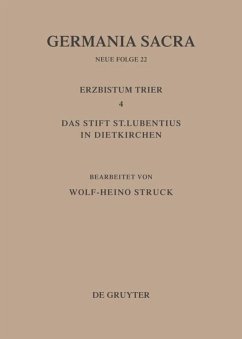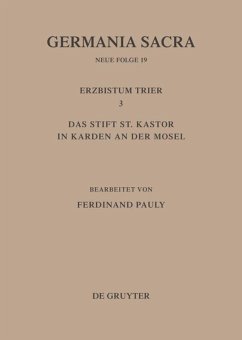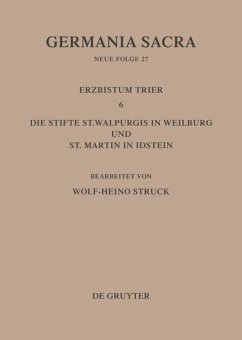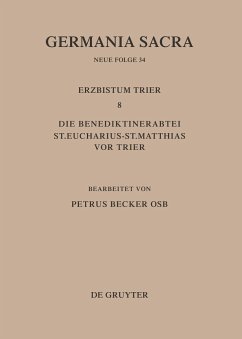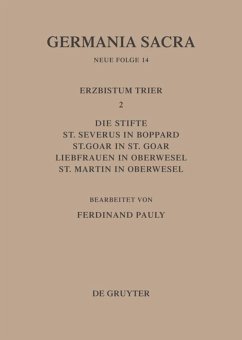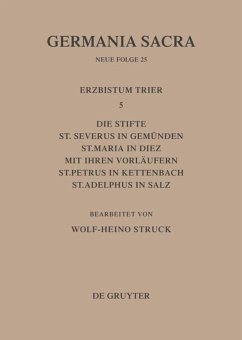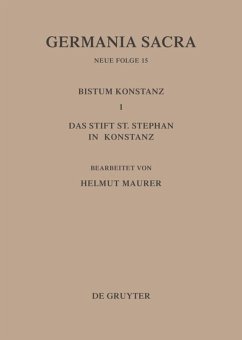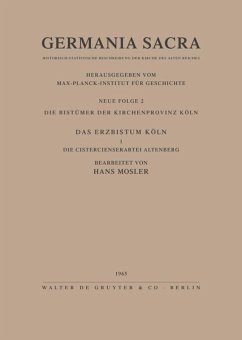
Die Bistümer der Kirchenprovinz Trier. Das Erzbistum Trier 9: Das Stift St. Simeon in Trier
Versandkostenfrei!
Versandfertig in 1-2 Wochen
360,00 €
inkl. MwSt.

PAYBACK Punkte
0 °P sammeln!
This is the first complete account of the history of this foundation, which existed from 1036/41 until 1802. Using numerous illustrations, the author elucidates the complex history of this double-apsed church integrated into the Roman Porta Nigra with the cell of St. Simeon. This church was almost totally destroyed in the 19th century. The capitular buildings, which are still largely standing, belong to the oldest in Germany. The volume contains detailed documentation of the internal structure of a secular chapter and its property, with special emphasis on its liturgical functions. Numerous individual biographies of the canons give a colourful picture of the life and work of the old chapter. Light is also thrown on the involvement of individual canons in the service of the diocesan bishop.
Die Geschichte dieses Stiftes, das von 1036/41 bis 1802 existierte, wird hier erstmals vollständig aufgearbeitet. Mit zahlreichen Abbildungen illustriert, erläutert der Autor die komplexe Baugeschichte der in die römische Porta Nigra integrierten Doppelkirche mit der Klause des hl. Simeon. Im 19. Jahrhundert wurde diese Kirchenanlage bis auf wenige Reste zerstört. Die heute noch weitgehend vorhandenen Stiftsgebäude gehören zu den ältesten in Deutschland. Innere Struktur eines Säkularkanonikerstifts wie dessen Besitz sind ausführlich dokumentiert, besonders dessen liturgische Aufgaben. Die zahlreichen Einzelbiographien der Stiftsherren geben ein farbiges Bild vom Leben und Wirken des alten Chorherrnstifts. Auch das Engagement einzelner Stiftsherrn im Dienste des Diözesanbischofs wird beleuchtet.




